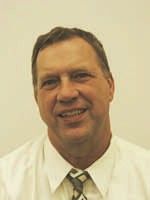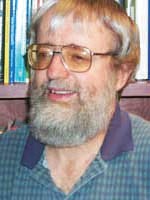

II MACI 2009
Novedades






Conferencias Plenarias
Prof. Terry Herdman
Director, Interdisciplinary Center for Applied Mathematics ICAM, Virginia Tech
herdman@icam.vt.edu
Mathematical Models for Non-Intrusive Inspection Systems
Abstract: We will discuss mathematical models and simulations for currently deployed and next generation inspection and detection sensor systems. This presentation will address issues of sensor selection and mobile deployment of sensor networks to optimize performance of the detection systems.
Prof. Max Gunzburger
Department of Mathematics, Florida State University
gunzburg@scs.fsu.edu
A nonlocal vector calculus with application to nonlocal boundary value problems
Abstract: We develop a calculus for nonlocal operators that mimic Gauss' theorem and the Green's identities of classical vector calculus. The operators we treat do not involve derivatives. We then apply the nonlocal calculus to define variational formulations of nonlocal "boundary" value problems that mimic the Dirichlet and Neumann problems for second-order scalar elliptic partial differential equations. For the nonlocal variational problems, we show how one can derive existence and uniqueness results and also how, under appropriate limits, they reduce to their classical analogs. Although we do not report on this in this talk, the results are easily extended to vector elliptic equations, and in particular, to the peridynamics model for materials.
This is joint work with Richard Lehoucq.
Prof. John A. Burns (Hatcher Professor in Mathematics)
Interdisciplinary Center for Applied Mathematics ICAM
jaburns@math.vt.edu
A Distributed Parameter Approach to Optimal Location and Control of Dynamic Sensor Networks
Abstract: In this talk we discuss a class of sensor/actuator location problems for and control of systems governed by partial differential equations (PDEs). Functional gains provide a basis for formulating the optimal estimation problem as a zonal observer. We show that these problems are naturally formulated as infinite dimensional optimal control problems with operator Riccati equations as constraints and discuss theoretical and computational issues associated with these problems. The problems are described as hybrid systems on infinite dimensional spaces (coupled systems of partial, ordinary and delay differential equations) and infinite dimensional theory is employed to develop computational algorithms. Numerical results are presented to illustrate the ideas and suggest areas for future research.
Prof. H. T. Banks
Center for Research in Scientific Computation de North Carolina State University (USA)
Two-Player Evasion-Interrogation Games with Uncertainty
Abstract: We first consider electromagnetic interrogation in the context of evader-interrogator games where each player has uncertain information about the adversary's capabilities. The mathematical formulation results in a static minmax problem over spaces of probability measures. The minmax cost functional is based on reflected fields from an object such as an airfoil or missile. To investigate theoretical, computational and approximation issues for these problems, it is necessary to put a topology on the space of probability measures. A natural choice for this is the Prohorov metric topology. One can then develop well-posedness and approximation results for the associated minmax problems. Efficient computational methods that correspond to Von Neumann's finite mixed strategies can readily be developed in this context.
Our efforts on static two person non-cooperative games demonstrate the feasibility and the potential usefulness of developing counter-interrogation (CI) and counter-counter-interrogation (CCI) theories for problems with uncertainty. We will also present our initial efforts on a conceptual, theoretical, and computational framework for CI/CCI dynamic games with uncertainty. This eventually involves allowing both the evader and interrogator to make dynamic changes to their strategies while each has only partial information (stochastic in nature) of the other's changes. We will describe a number of different formulations among possible stochastic approaches. The framework we describe makes essential use of much of the important theoretical and computational results involving feedback control for partial differential equations as developed during the past several decades. We illustrate some of the technical ideas in the context of an evader's formulation to thwart detection in the presence of dynamic interrogation with uncertainty.
Prof. Dr. Ekkehard Sachs
FB 4 - Department of Mathematics. University of Trier
54286 Trier, Germany
Numerical Optimization Methods in Finance
Abstract:
In this talk we give an overview over various applications of optimization algorithms in certain financial applications. We discuss the numerical solution of calibration problems for option pricing using stochastic differential equations and partial differential equations. In particular, we address the issue of fast gradient computation using adjoint techniques. Other applications include the hedging of barrier options which leads to a semi-infinite optimization problem. We show how techniques from robust optimization yield hedging portfolios which are much more stable under changes in the financial environment. The theoretical results are supported and illustrated by numerical applications on real data.
Prof. Víctor Pereyra
Computational Sciences Research Center. San Diego State University
San Diego, CA USA
Compressed Forward and Inverse Modeling for the Acoustic Wave Equation
Abstract: We consider the numerical solution of the acoustic wave equation and the inverse problem associated with determining the properties of the media given measurements. This is a common problem in seismic oil exploration, medical imaging and many other applications. Even with large clusters today is still fairly expensive to obtain the results required in 3D exploration. We propose the use of model order reduction of the dynamical system that results after space discretization (method of lines). There are several approaches to model order reduction and we have explored the so called Proper Orthogonal Decomposition or Karhunen-Loewe transform, that consists in obtaining a number of snapshots of the field from a full solve of the wave equation and using them as natural modes in a Galerkin type approach. This reduces dramatically the number of Ordinary Differential Equations to be solved, from the number of spatial mesh points to the number of modes used, usually from millions to hundreds. This is useful when one needs to solve many such problems varying, for instance, the position of the source, or in an inversion problem when varying the media, since the full solve is done only once and then the reduced order method is used from there on. We exemplify this technique in several examples.
- Terry Herdman: Mathematical Models for Non-Intrusive Inspection Systems.
- Max Gunzburger: A nonlocal vector calculus with application to nonlocal boundary value problems.
- John A. Burns: A Distributed Parameter Approach to Optimal Location and Control of Dynamic Sensor Networks.
- H. T. Banks: Two-Player Evasion-Interrogation Games with Uncertainty.
- Ekkehard W Sachs: Numerical Optimization Methods in Finance.
- Victor Pereyra: Compressed Forward and Inverse Modeling for the Acoustic Wave Equation.
- Julio Daniel Rossi: Decay estimates for nonlocal problems via energy methods.
- Ricardo H. Nochetto: Fluid Biomembranes. Modeling and Computation.
Title: Decay estimates for nonlocal problems via energy methods
Abstract: In this talk we study the applicability of energy methods to obtain bounds for the asymptotic decay of solutions to nonlocal diffusion problems. With these energy methods we can deal with nonlocal problems that not necessarily involve a convolution, that is, of the form
For example, we will consider equations like,
and a nonlocal analogous to the p-Laplacian
We obtain decay rates of the form
for some explicit exponent
that depends on the parameters
according to the problem under consideration.
Title: Fluid Biomembranes. Modeling and Computation
Abstract: We study two models for biomembranes. The first one is purely geometric since the equilibrium shapes are the minimizers of the Willmore energy under area and volume constraints. We present a novel method based on ideas from shape differential calculus. The second model incorporates the effect of the inside (bulk) viscous incompressible fluid and leads to more physical dynamics. We use a parametric approach, which gives rise to fourth order highly nonlinear PDEs on surfaces and involves large domain deformations. We discretize these PDEs in space with an adaptive finite element method (AFEM), with either piecewise linear or quadratic polynomials, and a semi-implicit time stepping scheme.
We employ the Taylor-Hood element for the Navier-Stokes equations together with iso-parametric elements, the latter being crucial for the correct approximation of curvature. We discuss several computational tools such as space-time adaptivity and mesh smoothing. We also discuss a method to execute refinement, coarsening, and smoothing of meshes on manifolds with incomplete information about their geometry and yet preserve position and curvature accuracy. This is a new paradigm in adaptivity. This work is joint with Andrea Bonito and M. Sebastian Pauletti.
